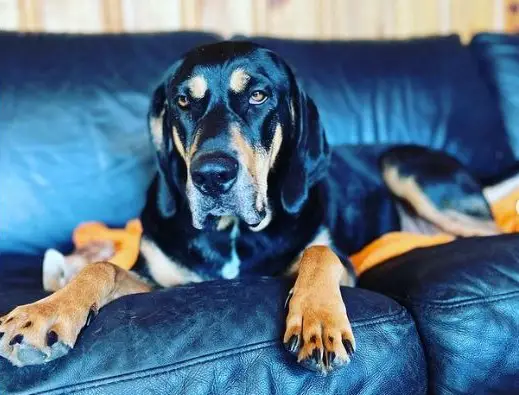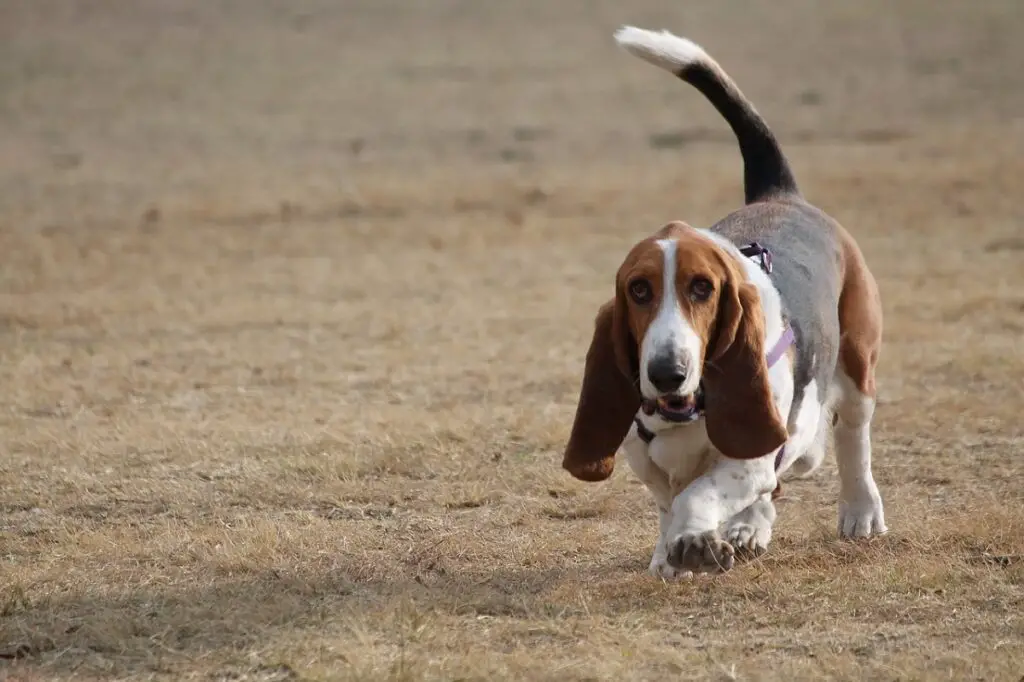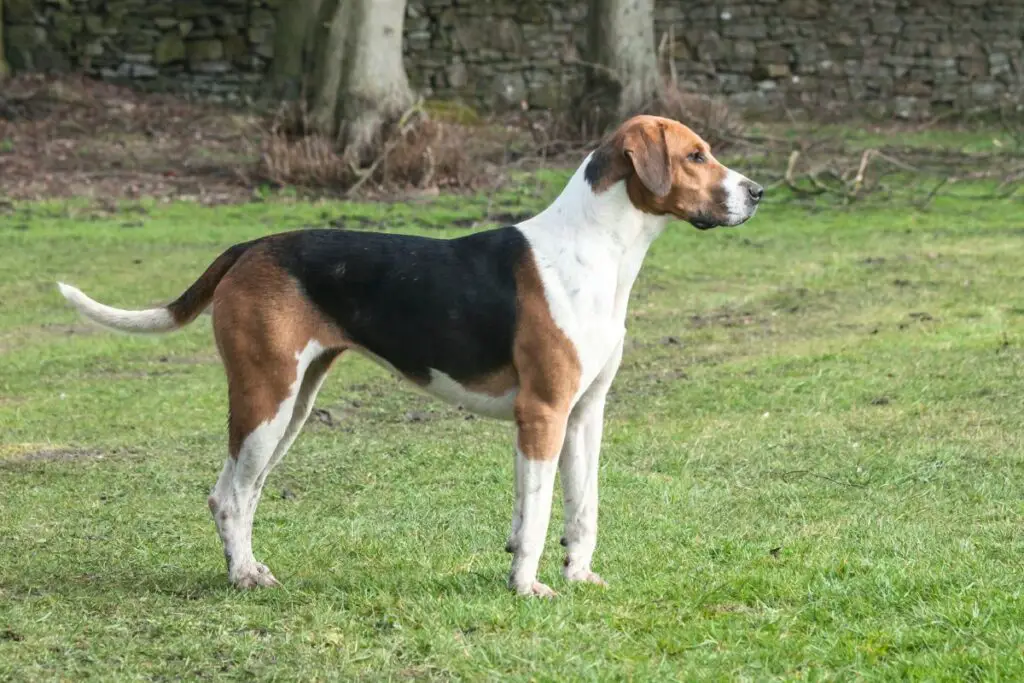A dog’s nose knows! Their incredible olfactory abilities make certain breeds exceptional trackers, invaluable for search and rescue, law enforcement, and even finding lost keys. But which breeds boast the best sense of smell? From the iconic Bloodhound to the surprising Basset Hound, we’ll explore nine canine sniffers with truly remarkable noses. Discover their unique strengths, training requirements, and what makes them the top scent hounds in the world. Get ready to be amazed by the power of the canine nose!
For over 11,000 years, humans have used dogs to track and hunt. The best tracking dogs are scent hounds (dogs that use scent more than sight), and the bloodhound is the number one scent-tracking dog.
“The nose knows” certainly rings true when it comes to dogs. Dogs have 220 million olfactory receptors, and humans have 50 million. We don’t even come close, which explains why dogs are used so often in search and rescue missions.
As good as hounds are with tracking, there are more breeds with the talent, and we want to share them with you. So put your nose to the ground, and let’s talk about the magnificent dogs that put humans to shame in the world of smelling.
Best Tracking Dogs
Tracking is a dog’s ability to detect, recognize, and follow a specific scent. The dog is usually restrained with a harness and leash. Some are trained to follow crushed vegetation, while others can follow pavement. This skill is most often used to find criminals or people who need help.
Dogs have detected cadavers buried 40 feet underground and up to 80 feet underwater. Wow! That’s some powerful sense of smell. They can track scents of drugs, explosives, and even human emotions. But it doesn’t stop there.
A dog’s nose can detect cancer, COVID-19, and even pregnancy. Although dogs being able to “pick up” pregnancy cannot be proven, as of yet, a dog’s change in behavior has been observed/noted for us to be aware of this phenomenon.
One ground-breaking fact is this: Dogs can smell the past…The presence of prey, enemies, or new scent(s). Yes, this is hypothetical, but what’s been proven is their olfactory abilities to smell where we’ve been, who we’ve been with, and even what medications/drugs we take if they’ve been trained to.
If dogs can smell people underground, suffice it to say they can smell the past. (How else do you explain their uncanny ability to track another dog in heat or find a reproductive partner like a missile?)
It’s time now…To talk about which tracking dogs nature has given significant powers to.
1. German Shepherd
These phenomenal dogs have many talents, including:
- Scent detection (drugs, explosives, etc.)
- Search & rescue (SAR)
- Assisting the blind/Service dogs
- Herding
- Watchdogs
- Military work
- Law enforcement (pursuing and detaining criminals, acting as police canine officers)
- Therapy dogs
- Companion animals
Besides all these incredible jobs, this breed is known for its tracking abilities. There is even a sport that was created specifically for the German shepherd. It’s called “Schutzhund,” which means “protection dog” in German.
It develops and evaluates dogs, concentrating on three parts: Obedience, protection, and tracking. It was created to show a dog’s intelligence and utility and even has competitions. (How many of us can say we’ve had a sport named after us?)
It was the man himself who developed the German Shepherd who said, “… Make sure my shepherd dog remains a working dog, for I have struggled all my life long for that aim.” – Max von Stephanitz
Stephanitz, once a Captain in the German Cavalry, wanted to develop a shepherd dog that could deliver messages, do rescue work, sentry duties, police work, and become a guard dog. He was part of a group that eventually, in 1899, created the breed standard and registry for the German shepherd. The American Kennel Club (AKC) recognized the breed in 1908.
Interesting note: Stephanitz did not like keeping dogs in kennels. (My kinda’ guy!)
2. Belgian Malinois
Although not as popular as the German shepherd is in America, the Belgian Malinois was one of four varieties of Belgian shepherd dogs developed in the late 19th century. Each group had the same anatomy and type but differed in hair texture, color, and length.
They were named individually for the region in Brussels where they were developed, according to the American Belgian Malinois Club. The first standard for the Belgian shepherd dog was created in 1892.
They’re extremely talented and excel at:
- Obedience competitions
- Tracking
- Agility competitions
- Flyball
- Herding
- Conformation competitions (dog shows)
- Schutzhund and other protection sports
- SAR
- Law enforcement work
- Military
- Lure coursing
The Malinois could probably go do your job if you asked them to. Professional trainers say they have a high “play drive” since most of what they do is seen as a game to them.
Extremely muscular and gorgeous, this breed isn’t aggressive unless ignored and not well trained or socialized which allows a dog the experience of new sights, smells, animals, and people. Training and socializing need to begin from puppyhood and continue throughout the rest of their lives.
The Malinois has a smooth, short coat that is fawn (pale tan) or mahogany (dull, reddish-brown); they can weigh 40-80 pounds and have a lifespan of 14-16 years. Long live the Belgian Malinois!
3. Labrador Retriever
If you’ve never heard of a Labrador retriever… well, everyone has heard of a Labrador retriever. I live with one. One thing I love to watch Elvis do is sniff, which he does throughout the day. Interesting note: There’s an anatomical difference in breathing and sniffing for a dog, but that’s another article.
(Always allow your dog to smell things. Never interrupt or stop this natural sense from happening. I’ve seen many people who try to stop their dogs from sniffing, which is like telling a human to stop seeing. Dogs learn about everything by using their nose.)
The Lab was developed in Newfoundland in the early 1800s as a water/gun dog to hunt waterfowl and game. They then crossed the pond with British nobles/sportsmen. (It is unclear why the name “Labrador” was chosen.)
Known as the best sporting dog in the world by Gun Dog Magazine, they’re highly trainable and versatile. It’s because of this trainability plus this breed’s tremendous drive that led them to track. Labs are consistently listed among the top trackers by handlers.
They’re prized for their “soft mouths” when it comes to retrieving prey, which translates into their gentleness with family members, including young children. What a good boy.
4. Redbone Coonhound
This scent hound, with its stunning red coat, may not be so familiar to you, but we’re going to change that… The Redbone is full of confidence, courage, and talent.
And they don’t just hunt raccoons but bears, mountain lions, and the like as well. Weighing 45-70 pounds and 21”-27” tall, this is a medium-sized, versatile, and formidable breed.
They’re one of six hounds that originated before the Civil War by American settlers (breeders and hunters) to provide a steady source of raccoon meat and fur, according to the AKC. This was during America’s expansion to the South and West. Their desire was to develop top hunting dogs that were also easy on the eyes.
The redbone is eager to please, has innate tracking and treeing abilities, and is fast and agile. They also adore their human and canine families if they’re trained and socialized early. The breed was recognized by the AKC in 2009.
5. Majestic Tree Hound

I’ll admit… Never heard of ‘em. And I know dogs. At 70-110 pounds, these are big boys and girls and descendants of the bloodhound and basset hound, among others. This breed, with long drop ears that scoop scents up from the ground into their nostrils, is friendly with kids, other dogs, seniors, and even strangers. Guard dogs, they are not.
Some of the best tracking dogs, this tree hound was developed in the US in the 20th century and is rarely seen outside the country. Their working role is to hunt large game animals like bobcats, mountain lions, and bears. (Oh my!) Having said that, they’re quite loyal companion dogs with their docile nature and intelligence.
This breed is easily trained with positive reinforcement instruction only. They have high endurance and love to work on the hunt. They’re more suitable to live in an area with plenty of room to roam. This is one hard-working dog.
6. Bloodhound
The best of the best tracking dogs, the bloodhound’s findings/results are even admissible in a court of law. Their nickname, a nose with a dog attached, says just how talented at trailing and tracking they are. Their entire bodies are made for it.
Their long drop ears gather scents, their loose, wrinkled skin traps scents, and their muscular bodies allow them to track scents for many miles. They’re one scent-sational dog. (Had to say it!)
The bloodhound can follow tracks over 300 hours old. Here’s what happens, according to PBS.org: A subject, a criminal or a person in need of help, sheds sweat vapor and skin, and even their breath. The dog will sniff a scent article or an item touched by the subject, and the odor gets lodged in its scent receptors.
This sends chemical signals to the olfactory bulb, and an “odor image” is created. It’s like a photograph for humans but much more detailed. The dog follows it. It’s not that easy, but that’s it in a nutshell. Even if there’s a bombardment of other scents, the bloodhound will stay focused and alert to the task at hand. Unbelievable but true!
7. Basset Hound
At only 40-65 pounds and up to 15” tall, “bas” means “low-set” in French. And they are definitely low to the ground. One of the best tracking dogs, due to their fantastic sense of smell and determination, bassets today are primarily companion animals. They are still used to hunt though.
In the 1500s, when the French were using low-slung, heavy-bodied hounds to trail, ancestors of the basset fit the bill. They were further developed in England in the 1800s.
The breed hunted rabbits (move over Bugs Bunny) but sometimes hunted larger game that were wounded. Hunters not only recognized their scenting abilities but also their stature since they could easily keep up with them.
Bassets are similar to the St. Hubert’s hound dogs except for height and leg length. If there is a downside to being a guardian to this beloved breed, it would be that they’re going to bay (howl) and they’re going to drool. But they’re also going to be great with the kids and other dogs.
8. American Foxhound
This beagle-ish, beautiful dog with long legs can come in ten colors or color combinations. They’re known for their endurance, prey drive, work ethic, and speed when hunting and, as such, must be exercised vigorously daily. Things like long walks, hikes, tracking competitions, and other lengthy outings are perfect for American foxhounds.
This breed is easy-going and loves to be around family. They’re also independent to the point of being stubborn, so consistency with patience in training will “do right” for this dog.
Enter George and Martha Washington (yes, that George Washington). The couple prided themselves on modeling the customs of British elites, which included the traditional English foxhunt. Washington loved the sport and had a hand in refining the breeding stock from his pack of hounds.
The American and English foxhounds are distinctly different, and today, the American foxhound is the state dog of Virginia. Kudos to the Washingtons.
9. Beagle
And Snoopy, a beagle, makes this list, too. From under 20 pounds to up to 30 pounds, this dog breed isn’t a large dog but doesn’t need to be. Their noses make them one of the best tracking dogs there are.
This gentle, friendly breed is armed with the long ears most hounds are blessed with. Bred to hunt in packs, they get along well with other dogs, cats, and just about every group of people.
They’re absolute favorites as family companions, coming in at number eight out of 199 in the Most Popular Dog Breeds List of the AKC.
Small-game hunters often choose them as hunting partners as well as companions. They’re also contraband detection dogs at US borders. (They’re not messing around.) Their bay/howl is bred into them to flush rabbits out of hiding and allow hunters to know their location. Thanks, Snoopy, for your service!
FAQs
What Is the Best Tracking Dog in the World?
The bloodhound is a good tracking dog.
Are Male or Female Dogs Better Trackers?
It certainly depends on the dog – male or female. But in some hunting circles, it’s thought that female dogs calm down a bit sooner than males and so learn more quickly. A better question is, what age should a great tracking dog be? Older dogs seem to return more game to guardians than younger ones.
What Dog Has the Best Nose for Tracking?
The bloodhound!
What Is the Best Dog for Tracking Wounded Deer?
A head-down, nose-to-the-ground dog, rather than an air-sniffing dog, is best for tracking deer. Labrador retrievers, bloodhounds, and even Dachshunds are excellent “blood dogs,” which are blood-tracking dog breeds.
Conclusion
So there you have it. Some of the best tracking dogs you’ll ever know of are included on this list. Makes you want to start hunting, doesn’t it? (Kidding! I’m a vegetarian.)
These breeds are just as comfortable as family dogs as they are on the hunt. They’re loving and easy to be around. And as adorable as the nose on their face.
The remarkable olfactory abilities of certain dog breeds make them invaluable partners in various fields. From search and rescue to law enforcement and even medical detection, these nine breeds, with their superior scenting capabilities, exemplify the power of the canine nose. Their dedication and highly developed sense of smell not only save lives but also enhance our understanding of the world around us. Choosing the right tracking dog depends on the specific task, but with proper training and care, these intelligent animals consistently demonstrate their exceptional skills and unwavering loyalty.



